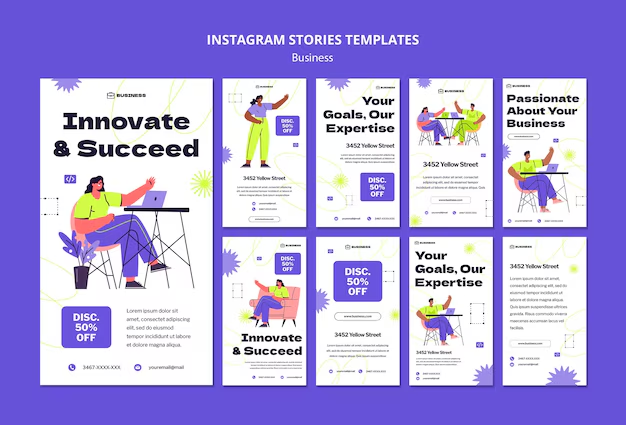In the dynamic realm of team endeavors, the optimization of various assets remains pivotal for success. Organizations must navigate a complex web of elements to ensure that every facet of their operations runs smoothly. Efficient use of available assets not only propels a team towards its goals but also enhances overall productivity, creating a ripple effect throughout the entire organization.
Recognizing areas where performance falters is crucial to fostering an environment of continuous improvement. Various factors can impede optimal functionality, ranging from inadequate allocation of personnel to suboptimal technology deployment. By shedding light on these aspects, teams can cultivate a more harmonious and effective atmosphere.
This article explores methods for tackling these obstacles, allowing teams to streamline their processes and enhance cooperation. Through strategic adjustments and thoughtful analysis, it is possible to unlock the full potential of every element involved, paving the way for a more efficient and thriving organizational landscape.
Understanding Resource Management Challenges
In the realm of executing any initiative, the allocation and utilization of personnel, materials, and time often pose significant hurdles. These obstacles can undermine the effectiveness of operations, lead to waste, and ultimately affect the success of desired outcomes. Recognizing the intricacies involved in harnessing these assets is essential for fostering a productive environment.
Common Hurdles Faced
One prevalent challenge is the misalignment between available capabilities and project demands. Teams may struggle with insufficient skill sets, inadequate tools, or a lack of coordination. Additionally, unforeseen circumstances such as budget constraints or shifting priorities can further complicate efforts, leading to delays and subpar results.
Strategies for Improvement
Addressing these complexities requires a proactive approach. Implementing regular evaluations of team strengths and weaknesses can highlight areas in need of enhancement. Furthermore, fostering open communication and collaboration can bridge gaps between various stakeholders, ensuring that everyone is aligned towards shared objectives. With the right strategies in place, navigating through these challenges can lead to more streamlined operations and better overall performance.
Common Inefficiencies in Project Execution
In any endeavor, the flow of tasks and allocation of assets often encounter hurdles that impede progress. Understanding where these obstacles arise can significantly enhance overall performance. This section examines frequent bottlenecks that organizations face during implementation phases, shedding light on their origins and potential consequences.
| Type of Inefficiency | Description | Impact |
|---|---|---|
| Poor Communication | Misunderstandings among team members can lead to errors and delays. | Increased costs and extended timelines. |
| Underutilization of Skills | Not leveraging team members’ full capabilities can result in reduced output. | Lost opportunities for innovation and efficiency. |
| Inadequate Planning | Lack of thorough preparation may cause unforeseen challenges. | Increased risk and chaotic execution. |
| Frequent Scope Changes | Uncontrolled alterations can disrupt timelines and lead to project drift. | Budget overruns and stakeholder dissatisfaction. |
| Resource Conflicts | Competing priorities can strain available assets, causing delays. | Reduced productivity and morale. |
Recognizing these common challenges allows teams to implement effective strategies for mitigation, ultimately achieving smoother operations and enhanced results.
Analyzing Team Dynamics and Resource Allocation
Understanding how a group’s behaviors and interactions impact the distribution of tasks is crucial for success. A thorough examination of team relationships and their influence on workflow can reveal significant insights into efficiency. By fostering a supportive environment and honing interpersonal connections, teams can enhance productivity and effectiveness.
Key Factors Influencing Team Interactions
- Communication: Open lines of dialogue facilitate clarity and prevent misunderstandings.
- Trust: Team members must rely on each other to foster a cooperative spirit.
- Motivation: Encouraging a culture of recognition and support can drive higher performance levels.
- Conflict Resolution: Effectively managing disagreements helps maintain a focused and harmonious atmosphere.
Strategies for Optimizing Team Functionality
- Conduct regular team assessments to identify strengths and areas for improvement.
- Encourage collaborative goal-setting to align individual contributions with collective objectives.
- Implement team-building activities to strengthen interpersonal ties.
- Utilize feedback mechanisms to promote continuous improvement and adaptation.
By paying close attention to these dynamics, organizations can refine their approaches to workforce allocation, leading to greater overall effectiveness and satisfaction among team members.
Tools for Effective Resource Monitoring
Effective oversight of assets is crucial for the success of any endeavor. Utilizing the right tools allows teams to track utilization, analyze performance, and make informed decisions. This section explores various solutions that enhance the ability to monitor and adjust resources efficiently.
- Project Management Software: Platforms such as Trello, Asana, and Microsoft Project provide visual tracking features that help teams organize tasks and allocate personnel appropriately.
- Time Tracking Tools: Applications like Toggl and Harvest enable individuals to log hours worked. This data can be instrumental in understanding usage patterns and identifying areas for improvement.
- Collaboration Platforms: Tools such as Slack and Microsoft Teams foster communication among members, promoting transparency and encouraging timely updates about workload and availability.
- Reporting Dashboards: Solutions like Tableau and Power BI aggregate data from multiple sources, offering insightful visualizations that facilitate quick understanding of performance metrics.
Furthermore, the adoption of these tools should be complemented by regular training sessions, ensuring that team members are well-versed in their functionalities and best practices. Continuous improvement and adaptation to technological advancements will help maintain efficiency in monitoring assets.
Strategies for Enhancing Efficiency
Optimizing workflows and utilizing available assets effectively can lead to significant improvements in productivity. By implementing targeted strategies, teams can ensure that their efforts are streamlined, allowing for better outcomes and higher satisfaction among stakeholders.
1. Streamlined Communication
Effective dialogue among team members is crucial for success. Establishing clear channels can reduce misunderstandings and delays. Consider the following methods:
- Utilize collaboration tools for real-time updates.
- Schedule regular check-ins to monitor progress.
- Encourage open feedback to address issues promptly.
2. Resource Allocation Optimization
Understanding how to best distribute assets can improve overall flow. Evaluate these approaches:
- Analyze past projects to determine successful strategies.
- Prioritize tasks based on urgency and importance.
- Cross-train team members to increase flexibility in task assignments.
Measuring the Impact of Changes
Understanding the repercussions of adjustments made within any initiative is crucial for ensuring sustained success. Evaluating how modifications affect different aspects not only provides insight into their effectiveness but also helps to inform future actions. This process involves both qualitative and quantitative assessments, highlighting the importance of balancing various metrics and stakeholder perspectives.
Quantitative Metrics
Utilizing numerical data can provide a clear, objective view of the outcomes resulting from changes. Key performance indicators (KPIs) should be established to measure productivity, budget adherence, and overall efficiency. Regularly tracking these metrics allows teams to gauge the effectiveness of alterations and make data-driven decisions moving forward. Analyzing trends over time can also reveal patterns that aid in refining strategies.
Qualitative Insights
Beyond numerical analysis, gathering feedback from team members and stakeholders is vital. Their insights can uncover unexpected consequences or highlight areas needing improvement that may not be apparent through data alone. Engaging with individuals involved fosters a collaborative atmosphere, leading to more comprehensive evaluations of changes made. Balancing quantitative analysis with qualitative feedback ensures a holistic understanding of an initiative’s trajectory.
Questions and answers: Project resource management inefficiencies
How can a project manager effectively use a resource management tool to improve project outcomes?
A project manager can use a resource management tool to gain visibility into resource availability, optimize resource utilization, and allocate resources based on project requirements. By tracking resource needs and monitoring resource capacity, the project manager can ensure that the right resource is assigned to each task, which helps prevent resource shortages and project delays. Effective resource management enables project teams to meet project objectives efficiently and supports successful project delivery by aligning resources with project timelines and milestones.
What are common resource management challenges that can lead to project delays, and how can they be addressed?
Common resource management challenges, such as poor resource allocation, lack of resource availability, and resource shortages, often lead to project delays. Addressing these challenges requires a proactive approach to resource forecasting and scheduling to ensure optimal resource utilization. By implementing a resource management process and using resource management software, project managers can identify and resolve resource constraints early, enabling them to allocate resources more efficiently and prevent delays throughout the project.
How does effective resource management contribute to project success and quality?
Effective resource management ensures that project team members have access to the right resources at the right time, which is critical for maintaining project quality and meeting project goals. By using resource management techniques, such as resource leveling and resource smoothing, project managers can balance resource capacity against project needs, preventing over-utilization or under-utilization of resources. Good resource management practices support project success by aligning resources with project milestones, ensuring that resource constraints do not compromise project quality or completion.
What role does resource forecasting play in preparing for future resource requirements in project portfolio management?
Resource forecasting is essential for preparing future resource requirements across a project portfolio, allowing project managers to anticipate resource needs and avoid common resource management problems. By analyzing current resource utilization and forecasting resource capacity, project managers can identify potential resource shortages or surpluses. This approach to resource management provides a clear view of resource availability for future projects and helps managers allocate resources effectively across multiple projects, ensuring efficient resource management and maximizing the success of every project.
How can a resource manager create an effective resource management plan to improve project completion rates?
A resource manager can create an effective resource management plan by assessing available resources, defining resource requirements based on project goals, and establishing a resource management strategy. This strategy includes resource scheduling and identifying dedicated resources for each specific project. By aligning resources with the project schedule and anticipating resource needs, a resource management plan helps prevent common resource allocation problems, leading to efficient resource utilization and increasing the likelihood of timely project completion.
What are some common resource allocation problems that lead to project delays, and how can they be addressed?
Common resource allocation problems include over-allocation, resource shortages, and inefficient utilization of resources. These issues can lead to delays if resources are not managed effectively. Addressing resource allocation problems requires a proactive approach, using a project management tool that offers resource management capabilities, allowing managers to track resource availability and adjust allocations as needed. An effective resource management solution helps balance workloads and ensures that each project has access to the necessary resources, thereby preventing delays and improving project progress.
How can poor resource management impact the state of project management within an organization?
Poor resource management can significantly impact the state of project management by leading to resource shortages, inefficiencies, and missed project deadlines. When managing resources is ineffective, it can create bottlenecks, slow down project progress, and lead to overextended teams. Implementing a resource management strategy that includes proper resource scheduling and utilization of resources allows project managers to avoid these issues. Right resource management enhances the organization’s ability to complete projects on schedule, improve overall productivity, and maintain a higher standard of project and resource management.
What are the benefits of using a project management tool with resource management capabilities?
Using a project management tool with resource management capabilities allows for better planning, tracking, and allocation of resources across projects. This type of tool provides visibility into available resources, enabling resource managers to allocate resources based on resource availability and project requirements. It also helps address resource allocation challenges and allows managers to create a resource management plan tailored to each specific project. The benefits of such tools include reduced inefficiencies, enhanced resource utilization, and a more structured approach to project and resource management, all of which contribute to successful project outcomes.

